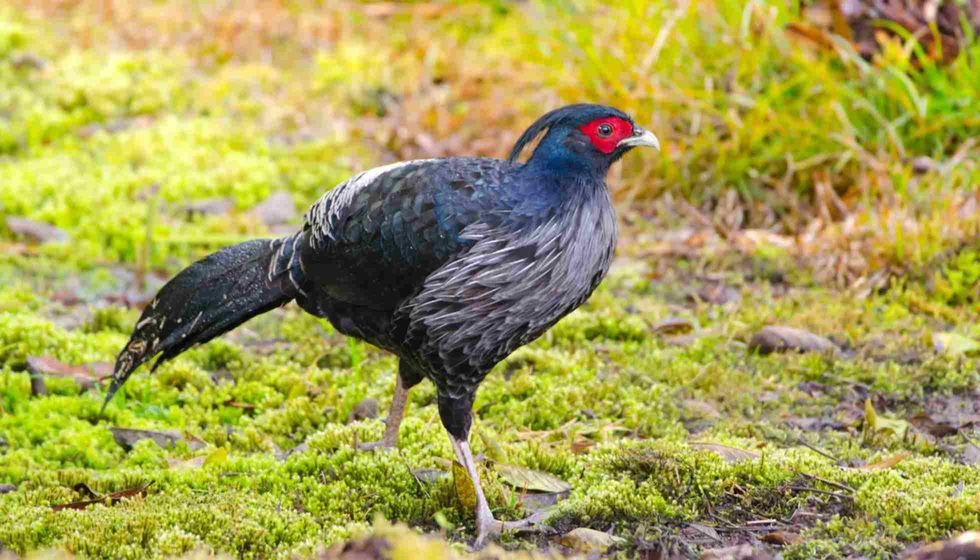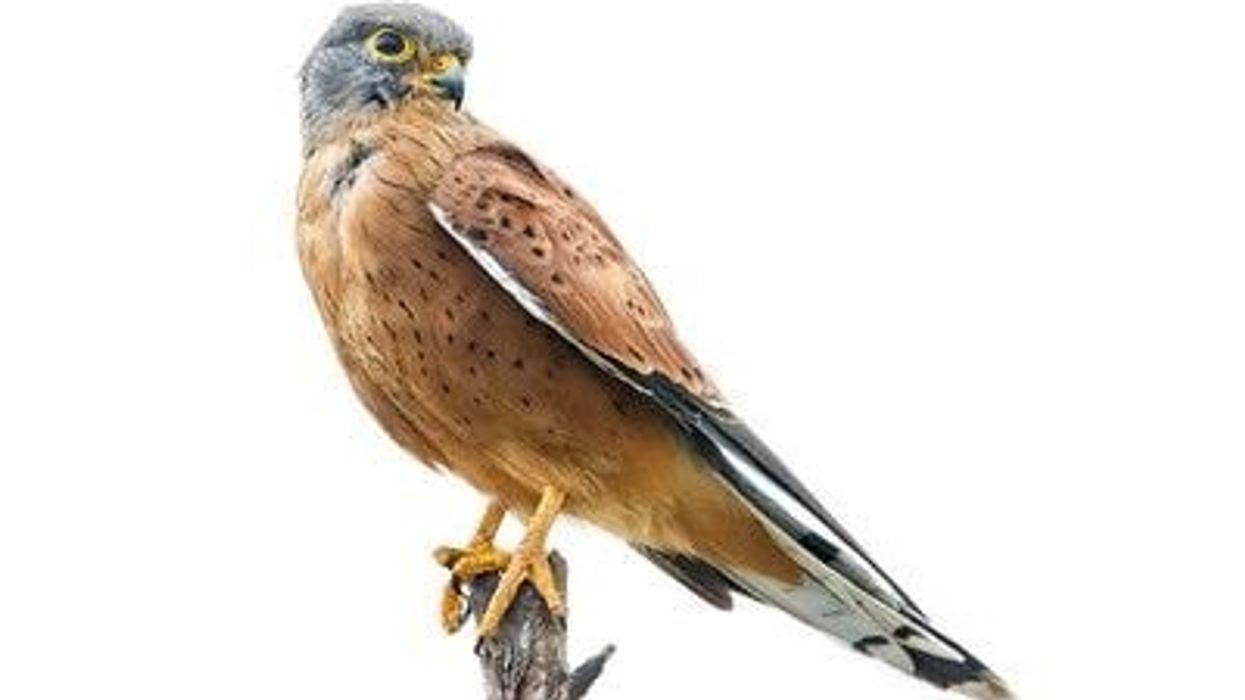A multicoloured bird, the kalij pheasant (Lophura leucomelanos), is native to several counties of Asia such as Pakistan, India, Thailand, Nepal, and many more.
These birds are known for their colorful plumage. Males generally have a glossy blue-black or silver-black plumage on the breast, while females possess dark brown feathers. Both male and female birds have bright red facial skin with red wattles. The bird has a long black tail.
Kalij pheasants belong to the family of Phasianidae and are part of one of the largest families. The species can easily be found in several states of northern India.
The average weight of the species is 3.3-3.7 lb (1500-1700 g). The average length of a male kalij pheasant is 25-29 in (63.5-73.6 cm) while females are 20-24 in (50.8-60.9 cm) long.
The species was regarded as a game bird in India and was introduced to the Hawaiian islands in 1962 as a game bird as well. The International Union for Conservation of Nature's Red List has listed the species in the Least Concern category, but a few subspecies are considered threatened due to their population decline.
Keep on reading to learn more interesting facts about the kalij pheasant. If you want to know more exciting information about different animals, check out the koklass pheasant and the pheasant.
Kalij Pheasant Interesting Facts
What type of animal is a kalij pheasant?
The kalij pheasant (Lophura leucomelanos) is a non-migratory bird primarily native to South Asia. These birds are omnivores and prey on bamboo seeds, small snakes, leaves, grains, insects, or acorns. The bird was introduced to Hawaii in 1962.
What class of animal does a kalij pheasant belong to?
The kalij pheasant belongs to the Aves class, the family Phasianidae, and the genus Lophura.
How many kalij pheasants are there in the world?
The exact population of the species is not known as of now, but the IUCN Red List has listed these pheasants in the Least Concern category. These pheasants can easily be found in northern India, Nepal, and other neighboring countries.
Where does a kalij pheasant live?
The kalij pheasant (Lophura leucomelanos) is native to several South and Southeast Asian countries. This bird was also introduced to Hawaii in 1962.
What is a kalij pheasant's habitat?
These beautiful birds are either found in forests or mountainous and hilly regions.
Who do kalij pheasants live with?
Birds of the kalij pheasant species living in the Hawaiian islands are found in groups. There is usually one female and one to six males, with one dominant male.
How long does a kalij pheasant live?
The species lives for around 10 years, and if kept in captivity, these birds can live up to 15 years.
How do they reproduce?
The kalij pheasant (Lophura leucomelanos) either follows the process of monogamy or polygamy. The breeding season of this species is not known.
A kalij pheasant male generally uses different sounds and call notes as a courtship display. Female birds generally lay around six to 10 eggs each season and the incubation period lasts for around 20-23 days. No parental care is put in by males, only female pheasants are involved in the construction of the nest and caring for their chicks.
What is their conservation status?
The kalij pheasant is not endangered as the International Union for Conservation of Nature Red List has listed the species in the Least Concern category, despite the fact that a few subspecies have been decreasing over the year. These birds are commonly found in India, Thailand, Nepal, and other countries of South Asia.
Kalij Pheasant Fun Facts
What do kalij pheasants look like?
Chicks and young kalij birds are beautiful. They have dark black-brown feathers, and when chicks turn into an adult, a glossy black tail is visible. Their breast is usually gray to white.
A male generally has a glossy blue-black or silver-black plumage or feathers, while females possess brownish feathers. Both male and female birds have bright red facial skin with red wattles. The bird has a long black tail.
How cute are they?
The pheasant bird is one of the most adorable birds found in countries in South Asia. This bird is best known for its beautiful feathers and the species has gray legs that make them super cute!
How do they communicate?
Like other species of birds, a kalij pheasant bird follows the same methods of communication. They primarily use songs, call notes, and body language to communicate with each other. During the breeding season, male and female birds attract each other through courtship behavior.
How big is a kalij pheasant?
This bird is one of the largest birds found in South Asia. A male bird is generally bigger compared to a female. The average length of a male kalij pheasant bird is 25-29 in (63.5-73.6 cm) while females are 20-24 in (50.8-60.9 cm) long. This pheasant bird is four times bigger than the Eurasian tree sparrow.
How fast can a kalij pheasant fly?
The exact speed of the kalij pheasant bird is not known as of now, but a common pheasant of the same Phasianidae family flies typically at a speed of 27-38 mph (43-61 kph) and can fly up to 56 mph (90 kph) while avoiding predation.
How much does a kalij pheasant weigh?
A kalij pheasant male bird is generally heavier than a female bird. These birds weigh between 3.3-3.7 lb (1500-1700 g).
What are their male and female names of the species?
There are no specific names given to male and female birds of the kalij pheasant species. People generally differentiate males and females the color of their plumage. Male birds have blue-black or gray-black feathers typically, while females have brown feathers.
What would you call a baby kalij pheasant?
No particular name is used to refer to the babies of kalij pheasants. People generally use chicks or young to refer to the babies of all birds.
What do they eat?
This bird adobes in forests and is an omnivore. They primarily prey on bamboo seeds, termites, small snakes, leaves, grains, worms, and acorns. They are hunted by humans, cats, foxes, and wild dogs.
Are they dangerous?
The birds are comparatively less aggressive or dangerous to humans than some other birds, but they can attack if someone tries to come close to their nest or eggs.
Would they make a good pet?
Please adhere to your local laws and regulations about keeping these birds as pets.
Did you know...
The eggs laid by a female kalij pheasant are cream in color.
Birds of this species found in Nepal are white in color and resemble the white-crested kalij pheasant.
Like other species of the pheasant family, a kalij bird nest is built in the ground.
Common pheasants, a species of the same family, generally have their breeding season in April.
Are there pheasants in Hawaii?
During the mid-20th century, this bird was considered a game bird. In the '60s, the bird was introduced in Hawaii, a state in the United States. The bird was introduced here for hunting purposes. Over the years, the Hawaiian habitat has suited the species as these birds are found in flocks here, unlike in some South Asian countries.
Is the kalij pheasant endemic?
The bird is primarily found in several South and Southeast Asian countries such as India, Pakistan, Nepal, and Thailand and is said to be native to South Asia.
Here at Kidadl, we have carefully created lots of interesting family-friendly animal facts for everyone to discover! Learn more about some other birds from our red-breasted nuthatch facts and ferruginous hawk facts pages.
You can even occupy yourself at home by coloring in one of our free printable Kalij pheasant coloring pages.










